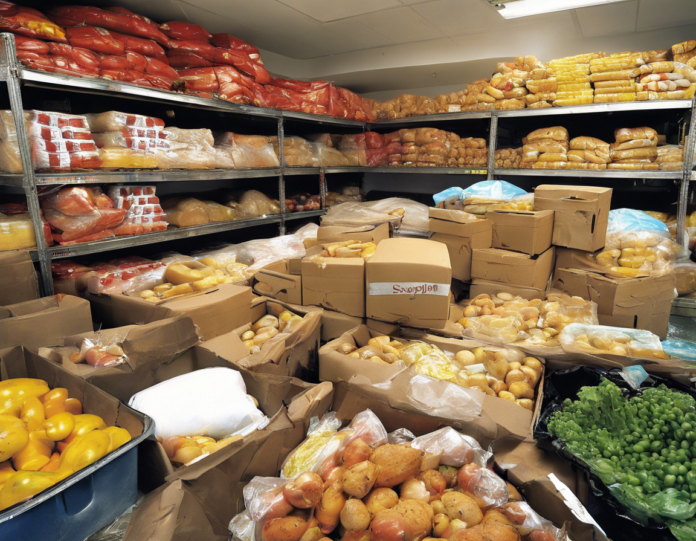In times of disasters, ensuring a stable and reliable food supply is critical for the survival and well-being of affected populations. Natural disasters such as hurricanes, floods, earthquakes, and wildfires, as well as man-made disasters including wars and conflicts, can disrupt food supply chains, leading to shortages and food insecurity. This article will explore the impacts of disasters on food supply systems and highlight strategies to mitigate these challenges.
The Importance of Food Supply in Disasters
During disasters, access to an adequate and safe food supply becomes a major concern for both affected populations and relief organizations. The disruption of transportation routes, damage to infrastructure, and loss of electricity can all contribute to food shortages. Inadequate food supply can lead to malnutrition, increased susceptibility to diseases, and even death among vulnerable populations, including children, the elderly, and individuals with chronic illnesses.
Impacts of Disasters on Food Supply
Disasters can have a range of impacts on food supply systems:
1. Disruption of Transportation
Disasters can damage roads, bridges, and ports, making it difficult to transport food from production areas to markets. This disruption can lead to shortages in urban centers and prevent farmers from accessing essential agricultural inputs.
2. Damage to Infrastructure
The destruction of warehouses, storage facilities, and processing plants can result in food losses and waste. Without proper storage facilities, perishable foods may spoil quickly, exacerbating food shortages.
3. Loss of Electricity
Disasters often cause power outages, disrupting refrigeration systems and food processing operations. Without electricity, perishable foods may become unsafe for consumption, further impacting food supply chains.
4. Contamination of Water Sources
Floods and other disasters can contaminate water sources, leading to waterborne diseases. Access to clean water is essential for food production and cooking, further exacerbating food security issues.
Strategies to Ensure Food Supply During Disasters
To address the challenges posed by disasters and maintain a stable food supply, the following strategies can be implemented:
1. Preparedness and Planning
Developing emergency response plans that prioritize food supply chains can help mitigate the impacts of disasters. Identifying vulnerable areas and populations in advance can streamline relief efforts and ensure timely assistance.
2. Diversification of Food Sources
Encouraging diversified food production systems can reduce reliance on a single crop or livestock species. This can help buffer against crop failures and ensure a more resilient food supply chain.
3. Investment in Infrastructure
Investing in resilient infrastructure, such as cold storage facilities and backup power generators, can help maintain food quality and safety during emergencies. Improving transportation networks can also facilitate the movement of food supplies to affected areas.
4. Community Engagement
Engaging local communities in disaster preparedness and response efforts can enhance coordination and communication during crises. Community-based approaches to food distribution and storage can ensure that resources are distributed equitably.
5. Coordination Among Stakeholders
Collaboration between governments, NGOs, businesses, and international organizations is essential for effective disaster response. Coordinating efforts to assess food supply needs, mobilize resources, and deliver assistance can help ensure a more efficient response.
Frequently Asked Questions
1. What role do governments play in ensuring food supply during disasters?
Governments play a crucial role in disaster preparedness and response, including coordinating relief efforts, assessing food supply needs, and implementing policies to ensure food security for affected populations.
2. How can individuals contribute to maintaining food supply during disasters?
Individuals can contribute by supporting local farmers and food producers, reducing food waste, and volunteering with organizations involved in disaster response efforts.
3. What are some innovative technologies being used to ensure food supply during disasters?
Drones are being used to assess crop damage and deliver supplies to remote areas, while blockchain technology is being explored to track food distribution and prevent fraud during emergencies.
4. How does climate change impact food supply during disasters?
Climate change can increase the frequency and intensity of natural disasters, such as droughts and storms, which can disrupt food production and distribution systems, leading to food shortages.
5. What are the long-term effects of food shortages during disasters?
Food shortages can have long-term health and economic impacts on populations, including malnutrition, loss of livelihoods, and decreased resilience to future disasters. Addressing food security issues during disasters is essential for building sustainable and resilient food systems.




